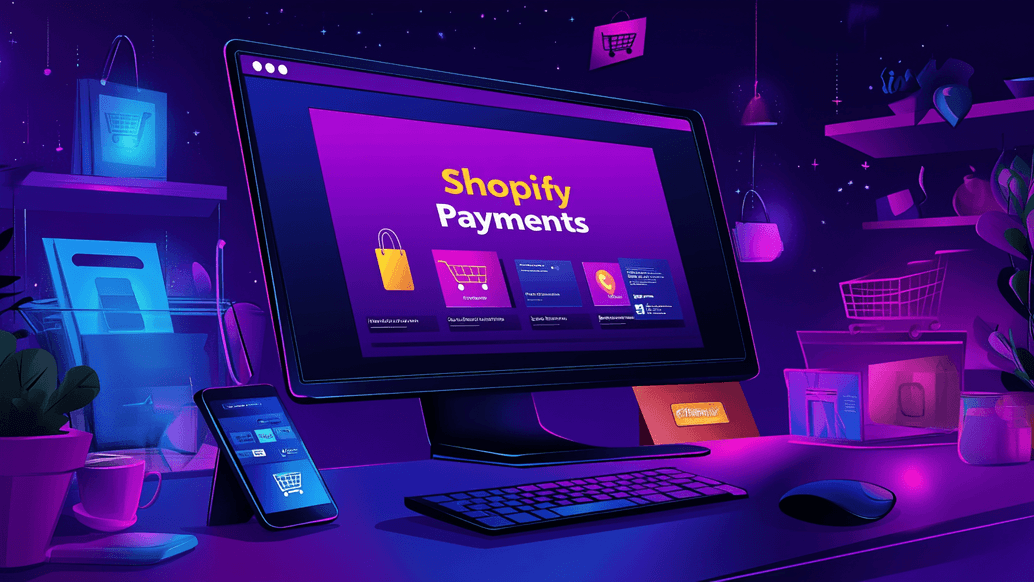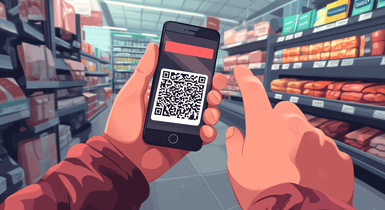Shopify Payments Review: Key Features, Pros & Cons
Contents

As of 2024, Shopify has over 4.6 million active stores and holds around 26% of the global e-commerce market. With such impressive numbers, it’s not surprising that the marketplace has introduced its own payment system, called Shopify Payments, a review of which you will find below.
Should I use Shopify Payments? In our Shopify Payments review, we’ll explore the key advantages and disadvantages of the system so you can answer the question yourself.
How Does Shopify Payments Work?

Shopify’s payment system uses centralized processing algorithms for each transaction, redirecting financial flows to different store and business accounts.
Additionally, the aggregator consolidates accounts and displays real-time balance changes for the seller. The system can handle customized payment requests, automatic discounts, and more.
For storefronts of the Shopify platform, the payment service is set up automatically, while for other marketplaces, it’s available as an integration option.
Shopify Payments Features

Besides the points mentioned above, the Shopify payment system can meet the needs of both the merchant and the customer through the following features:
- Unlimited products. There are no limits on the number of products you can sell on Shopify. This means thousands of transactions can be processed across diverse categories and product types.
- Brand assets. Brand assets, such as trademarks, slogans, or logos, can be used on the storefront and in payment receipts. This feature is likely intended to attract the attention of large brands.
- Fraud prevention. The platform has an automated fraud prevention system that can halt transactions in case of suspicious account activity.
- Abandoned cart recovery. All Shopify payments reviews state that personalization is a strong selling point of this system. It can foster engagement with hesitant customers, reminding them periodically about an incomplete purchase, offering alternatives, complementary products, and more.
- Discount codes. The system can automatically apply promo codes, sales conditions, etc., personalizing the shopping experience and boosting sales during themed and seasonal promotions.
So, is Shopify Payments good? Absolutely! However, before integration, it’s worth reviewing the company’s fees and charges.
Shopify Payments Pricing and Fees
Interestingly, both Shopify Payments pricing and Shopify Payments fees are dynamic and largely depend on the storefront’s region and scale. At the same time, the platform offers several pricing plans that allow you to start comfortably and expand as your company grows. Let’s examine the three most popular plans.
| Basic | Shopify | Advanced |
|---|---|---|---|
Price per month | $32 | $92 | $399 |
Price per year (-25% per mo) | $288 | $828 | $3,588 |
Online credit card rates | 2.9% + 30¢ | 2.6% + 30¢ | 2.4% + 30¢ |
Online international/Amex credit card rates | 3.9% + ¢ | 3.6% + ¢ | 3.4% + ¢ |
In-person credit/debit card rates | 2.7% + 10¢ | 2.5% + 10¢ | 2.4% + 10¢ |
Maximum staff accounts | 2 | 5 | 15 |
Third-party transaction fees if not using Shopify Payments | 2% | 1% | 0.5% |
Shipping discount rates from DHL Express, UPS | Up to 77% | Up to 88% | Up to 88% |
Reports (to track and analyze your store’s performance) | Basic | Standard | Advanced |
Shipping rates calculation | No | No | Yes |
Shipping labels | Yes | Yes | Yes |
Shopify POS Lite | Yes | Yes | Yes |
Shopify Payments Pros

Here are some of the platform’s strengths that you’ll get to enjoy regardless of the payment plan you choose:
Automatic Payment Setup in Stores
If you have a Shopify store, the payment tool will be set up automatically, incorporating your products into the system. All that’s left for you to do is management, which in most cases comes down to adding your payment card and account, setting up price personalization, and applying promo algorithms when you see fit.
Full Integration with the Native Platform
Most of the storefront’s modules and settings can be synchronized with Shopify’s platform. This means your customers won’t need any other tools to pay for orders from your store or repeatedly enter the card information manually.
Multi-Currency Transactions
The aggregator automatically detects the transaction currency and routes it to the corresponding Shopify account. This means you can not only optimize payments but also expand your reach to new markets and regions.
Optimal Fees
The most popular payment methods come with low fees, but less common ones can incur additional transaction charges (you can see the full list of both on the platform’s website). As always, you can customize payment options to minimize fee-related expenses.
Shopify Payments Cons

While the platform has many advantages, it also has a few significant drawbacks to consider. Here’s what you should know before implementing Shopify Payments:
Additional Fees for Third-Party Payment Gateways
If you plan to add other payment platforms, be prepared for increased marketplace fees, ranging from 0.5% to 2% per transaction made through third-party systems.
High Package Costs
As your business grows, you’ll need to expand the capabilities of your payment platform, which can get quite pricey with this platform. For example, while the base plan costs only $32 per month, the Advanced package comes with a far more painful $399 price tag.
High Cost of POS
Using the Shopify POS PRO system for offline sales locations costs around $89 per month per device. However, it can be used free (up to 200 locations with Shopify Payments) if you’re on the Plus payment plan.
Regional Limitations
Currently, the payment system is available in certain countries. Here’s the complete list.
Final Thought
So, what is Shopify Payments? It’s Shopify’s native payment system, offering competitive rates and decent supporting features. However, its use is fully justified only if your business operates specifically on Shopify. If you rely on other e-commerce marketplaces, you should consider payment systems like Stripe or Clover, as their customization range and pricing might better suit your business needs.




